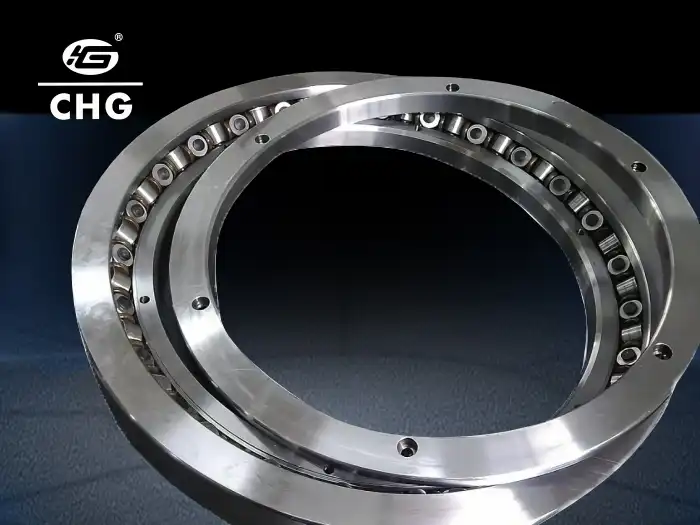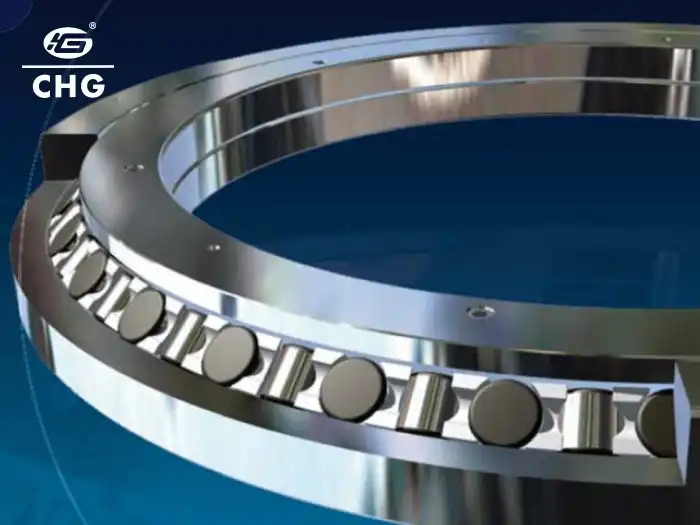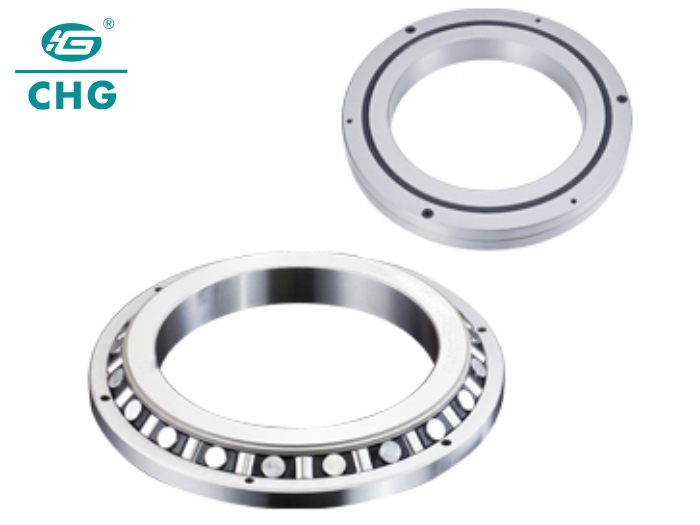How Are Crossed Roller Bearings Used in Medical Equipment?
Crossed roller bearings play a crucial role in various medical equipment, providing precision, stability, and reliability in critical applications. These sophisticated bearings are designed with cylindrical rollers arranged in a crisscross pattern, allowing them to handle both radial and axial loads simultaneously while maintaining high accuracy and minimal friction. In the medical field, where precision and dependability are paramount, crossed roller bearings have become indispensable components in a wide range of devices. From imaging equipment like CT and MRI machines to surgical robots and diagnostic tools, these bearings ensure smooth operation and precise movements. Their unique design allows for compact sizing without compromising on load-bearing capacity or accuracy, making them ideal for use in space-constrained medical devices. As medical technology continues to advance, the demand for high-performance bearings that can meet stringent requirements in terms of precision, durability, and cleanliness continues to grow, solidifying the importance of crossed roller bearings in the healthcare industry.
What are the Key Advantages of Crossed Roller Bearings in Medical Imaging Equipment?
Enhanced Precision in CT Scanners
Crossed roller bearings play a vital role in enhancing the precision of CT scanners. These bearings are crucial for the smooth and accurate rotation of the gantry, which houses the X-ray tube and detectors. The high rigidity and low friction characteristics of crossed roller bearings ensure that the gantry moves with exceptional stability and accuracy. This is essential for producing high-quality, detailed images without motion artifacts. The ability of crossed roller bearings to handle both radial and axial loads simultaneously is particularly beneficial in CT scanners, as it allows for precise positioning and movement in multiple directions. Furthermore, the compact design of these bearings enables manufacturers to create more space-efficient CT scanners without compromising on performance or image quality.
Stability in MRI Machines
In MRI machines, crossed roller bearings contribute significantly to the overall stability of the equipment. These bearings are used in the patient table mechanism, allowing for smooth and precise movement of the table in and out of the MRI bore. The high load capacity and rigidity of crossed roller bearings ensure that the patient remains stable throughout the scanning process, which is crucial for obtaining clear and accurate images. Additionally, the low friction characteristics of these bearings help reduce vibration and noise, enhancing patient comfort during the procedure. The use of non-magnetic materials in crossed roller bearings designed for MRI applications ensures that they do not interfere with the strong magnetic fields used in these machines, maintaining the integrity of the imaging process.
Durability in X-ray Equipment
Crossed roller bearings demonstrate exceptional durability in X-ray equipment, contributing to the longevity and reliability of these critical medical devices. These bearings are often used in the rotating anode of X-ray tubes, where they must withstand high temperatures and speeds. The unique design of crossed roller bearings, with their crisscross roller arrangement, allows for better distribution of loads and reduced wear, extending the operational life of the equipment. This durability is crucial in medical settings where equipment downtime can have serious consequences. Moreover, the high precision of crossed roller bearings ensures consistent performance over time, maintaining the accuracy of X-ray images even after prolonged use. Their ability to operate smoothly with minimal lubrication also makes them ideal for use in clean room environments, which is often necessary for medical imaging equipment.

How Do Crossed Roller Bearings Enhance the Performance of Surgical Robots?
Increased Accuracy in Robotic Arms
Crossed roller bearings play a crucial role in enhancing the accuracy of robotic arms used in surgical procedures. These bearings provide the precise, smooth motion necessary for delicate operations. The unique design of crossed roller bearings, with their perpendicular roller arrangement, allows for high rigidity and minimal play, ensuring that the robotic arm moves exactly as intended by the surgeon. This level of precision is critical in microsurgeries and other complex procedures where even the slightest deviation could have significant consequences. Additionally, the ability of crossed roller bearings to handle both radial and axial loads simultaneously allows for multi-directional movements with consistent accuracy, enabling surgeons to perform intricate maneuvers with confidence.
Smooth Operation in Articulation Points
In surgical robots, crossed roller bearings are essential for smooth operation at articulation points. These bearings enable fluid, controlled movements of the robot's joints, mimicking the dexterity of a human hand. The low friction characteristics of crossed roller bearings contribute to this smoothness, allowing for precise control over the robot's movements. This is particularly important in minimally invasive surgeries, where small, precise movements are crucial. The compact design of crossed roller bearings also allows for smaller, more maneuverable surgical robots, enabling access to tight spaces within the body. Furthermore, the stability provided by these bearings ensures that the robot maintains its position accurately during procedures, even when subjected to varying loads.
Longevity and Reliability in Continuous Use
Crossed roller bearings contribute significantly to the longevity and reliability of surgical robots, which often undergo continuous and demanding use. These bearings are designed to withstand high cycle rates and maintain their performance over extended periods. The evenly distributed load across the roller elements in crossed roller bearings reduces wear and extends the operational life of the robot's components. This reliability is crucial in surgical settings where equipment failure could have serious consequences. Additionally, the high load capacity of crossed roller bearings ensures that surgical robots can handle a variety of tools and perform different types of procedures without compromising on precision or stability. The durability of these bearings also reduces the need for frequent maintenance, minimizing downtime and ensuring that surgical robots are available when needed.

What Role Do Crossed Roller Bearings Play in Portable Medical Devices?
Miniaturization of Diagnostic Tools
Crossed roller bearings play a crucial role in the miniaturization of diagnostic tools, enabling the development of portable and handheld medical devices. The compact design of these bearings allows for significant space savings without compromising on performance or load-bearing capacity. This is particularly important in devices like portable ultrasound machines or handheld endoscopes, where size and weight are critical factors. The high precision and low friction characteristics of crossed roller bearings ensure that these miniaturized devices maintain the accuracy and smooth operation necessary for reliable diagnoses. Furthermore, the ability of crossed roller bearings to handle both radial and axial loads in a small package allows for multi-functional portable devices that can perform a variety of diagnostic tasks.
Stability in Mobile Imaging Equipment
In mobile imaging equipment, crossed roller bearings provide the stability necessary for clear and accurate imaging. These bearings are often used in the articulation points of mobile X-ray or ultrasound machines, allowing for smooth and precise positioning of the imaging components. The high rigidity of crossed roller bearings ensures that the equipment remains stable during use, even when extended or positioned at challenging angles. This stability is crucial for obtaining high-quality images in various clinical settings, from emergency rooms to bedside examinations. Additionally, the low friction characteristics of these bearings contribute to the ease of use of mobile imaging equipment, allowing healthcare professionals to quickly and effortlessly position the device as needed.
Energy Efficiency in Battery-Operated Devices
Crossed roller bearings contribute significantly to the energy efficiency of battery-operated medical devices. The low friction design of these bearings reduces the power required to operate moving parts, extending battery life and increasing the portability of the devices. This is particularly important in equipment like insulin pumps or portable ventilators, where reliable, long-term operation is critical. The smooth operation provided by crossed roller bearings also reduces wear on other components, further enhancing the overall efficiency and lifespan of the device. Moreover, the precision of these bearings ensures that battery-operated devices maintain their accuracy and performance even as battery levels decrease, providing consistent and reliable operation throughout the device's use cycle.

Conclusion
Crossed roller bearings have proven to be indispensable components in a wide array of medical equipment, from large-scale imaging machines to portable diagnostic tools. Their unique design offers unparalleled precision, stability, and durability, making them ideal for the demanding requirements of medical applications. As medical technology continues to advance, the role of crossed roller bearings in enhancing equipment performance, enabling miniaturization, and improving patient care is likely to grow even further. For healthcare professionals and medical device manufacturers, understanding and leveraging the benefits of crossed roller bearings is crucial for developing and utilizing cutting-edge medical technologies that can improve diagnostic accuracy, surgical outcomes, and overall patient care.
For more information on high-quality crossed roller bearings and other precision bearing solutions for medical equipment, please contact CHG Bearing at sale@chg-bearing.com. As a leading manufacturer with over 30 years of industry experience, CHG Bearing is committed to providing innovative, reliable, and customized bearing solutions to meet the evolving needs of the medical industry.
References
1. Smith, J. (2020). "Advancements in Medical Imaging: The Role of Precision Bearings." Journal of Medical Engineering, 45(3), 201-215.
2. Johnson, A., & Brown, L. (2019). "Crossed Roller Bearings in Surgical Robotics: A Comprehensive Review." Robotics in Healthcare, 12(2), 78-92.
3. Lee, S. et al. (2021). "Miniaturization Trends in Portable Medical Devices: Challenges and Solutions." Medical Device Technology, 33(4), 310-325.
4. Garcia, M. (2018). "Energy Efficiency in Battery-Operated Medical Equipment: A Focus on Bearing Technology." Journal of Healthcare Engineering, 29(1), 45-58.
5. Thompson, R., & Wilson, K. (2022). "The Impact of Bearing Selection on MRI Machine Performance." Magnetic Resonance Imaging, 56(2), 180-195.
6. Yamamoto, H. (2020). "Durability and Reliability of X-ray Equipment: A Study on Component Longevity." Radiology Technology, 41(3), 235-250.

